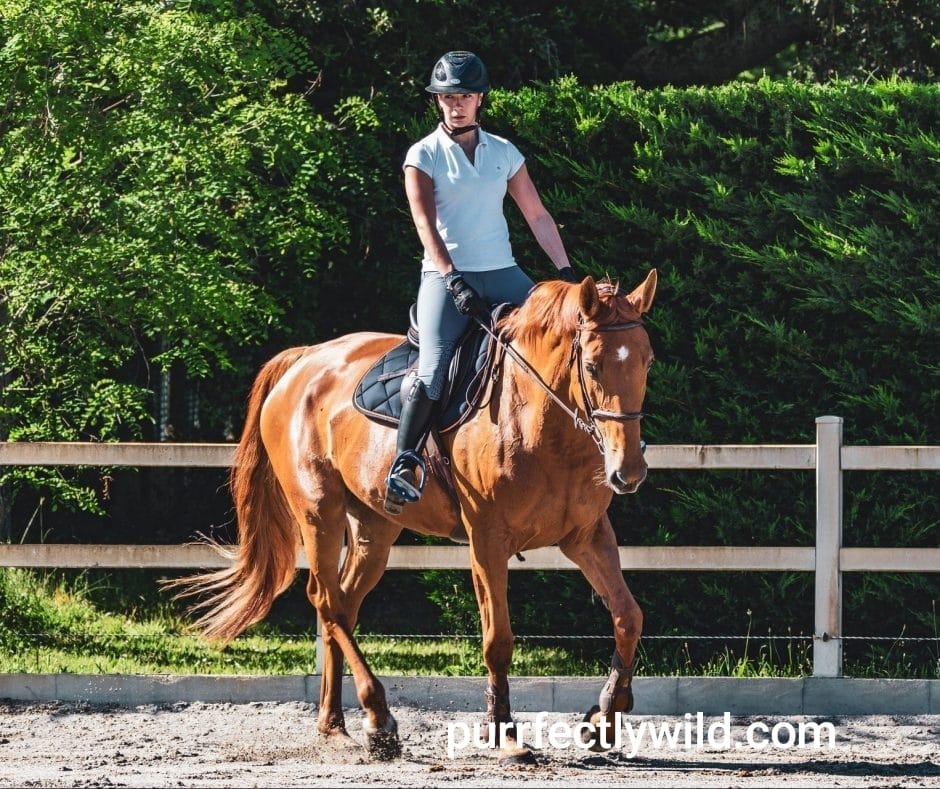The beauty of the sport is that you get more than just time with a beautiful, mighty creature, and it’s not like riding on motorcycles. In addition to the thrill and back-to-nature experience riding a horse offers it is also an alternative to your usual workout that can work wonders for you. If you are a passionate rider or are just thinking about trying this pastime, knowing the fitness benefits of riding a horse and how many calories can be burnt while pony trekking is good.
Understanding the Physical Demands of Horseback Riding
Although commonly scoffed at as purely recreational, horseback riding is physically demanding. After all, it could appear that the horse is doing everything. Control and balance are the gifts of seasoned riders, but they also have to exert themselves physically so as not to fall. So many muscles are used in riding from your center, holding you upright to the pressure of pushing down into a heel with each stride, but then there is an arm because if they push and pull on it… so back too!
The physical requirements of riding are more than just hanging onto the reins and balancing yourself in a seat. It means continually changing your position, being centered in your core to remain balanced, and correctly using leg aids from the horse. Calories are calories, regardless of their consumption status or macro composition.
How Many Calories Do You Burn Riding a Horse?
The number of calories riding a horse burns can depend on your weight, how hard you’re working out and what type of riding you are doing. Roughly speaking, horse riding is divided into certain levels of intensity:
Leisure Riding:
These would be simple things like walking or taking a very slow ride, which is something that anyone who knows it will tell you beginners usually experience such situations at some point on their casual rides. Since you are using resistance your body is actually being exercised and burned calories all without doing anything too fast. In doing out an average person of about 150 pounds rides, you will be able to burn between 150-200 calories per hour when riding just for leisure.
Trotting and cantering:
It is intermediate level horseback riding where the intensity becomes medium. Trotting and cantering are more labor intensive as you need to employ additional energy in order to keep your balance, which translates into a higher calorie burn. A 150-pound person might burn from 400 up to as high as ~550 calories per hour at this level.
Galloping and jumping
More physical activity is asked for in the case of galloping or Jumping, which are common among more advanced riders. Such high-intensity activities can burn as many as 700 calories per hour, though the rate varies based on a rider’s weight and skill.

Types of Horseback Riding and Their Caloric Impact
Calorie-Burning Types, But How You Ride Matters There are a wide variety of ways you might saddle up and ride, but here we will discuss different types of decreased riding and how much each choice burns calories.
Trail Riding:
Riding of this kind involves walking, trotting, and sometimes cantering over varied terrain. The change in pace and the tests of more fierce landscapes can prompt a good workout, consuming somewhere close to 400-600 calories each hour.
Dressage:
: Commonly known as the ‘horse ballet,’ Dressage requires high accuracy and is all about control and lightness. While not as aggressive as the other horseback riding styles, Dressage can consume a moderate number of calories per hour: 300-500 (depending on body weight).
Show Jumping:
Show Jumping is a high-intensity activity in which one must navigate a course of jumps. The physical effort of maintaining balance as the horse leaves/lands and all that mental concentration make this a phenomenal calorie burner, with individuals using between 500 and more than 700 calories for each hour.
Eventing:
Rapidly becoming the triathlon of choice for many equestrians, Eventing combines the dressage phase on day one with cross-country and show Jumping. A high-impact sport, interval-based training uses body weight and various obstacles to burn up to 700 cal/hr(Collectors).
How to Maximize Calorie Burn While Riding a Horse
Increase the Intensity
: Engage in higher intensity riding activities such as trotting, cantering, or jumping. The more intense the activity, the more calories you’ll burn.
Ride for Longer Periods:
Extending your riding time can increase the total number of calories burned. If you typically ride for 30 minutes, try extending your session to an hour.
Incorporate Varied Terrain:
Riding on hills or uneven terrain requires more effort from both you and the horse, leading to a higher calorie burn.
Take Up Different Riding Disciplines:
Engaging in different riding disciplines such as dressage, jumping, or eventing can challenge your body in new ways and increase your overall fitness level.

YOU BURN A LOT OF CALORIES WHEN YOU RIDE A HORSE, BUT IT’S NOT JUST DUE TO THE RIDING ACTIVITY ITSELF.
Sure! Riding burns many calories, but riding not only means riding a horse. Then what exactly burns the calories? What factors contribute to it? Here are just a few others:
1. Grooming and saddling
Grooming: Cleaning hooves, brushing the horse, and preparing it for riding all require physical effort that works the arms, shoulders, and stomach muscles.
Saddling: Lifting and positioning the saddle, tightening up the girth, and altering the tack all require strength—particularly in your upper body.
2. Balancing and posture
Engaging core muscle: As long as you are seated in the saddle, you must use your stomach muscles. They provide balance and help you consume more calories even when you’re not moving quickly.
Power from legs: When trimming the horse’s position whine cue, the muscle groups, including the thigh, calf, and corporate muscles, are all active.
3. Mental concentration
Concentration: Riding a horse requires quick decision-making and can be tiring for the brain. This mental exertion adds to your total energy consumption.
4. Working out in various riding styles
Different Movements: Up-and-down movement can be hard work, and sitting requires muscle tension that uses up a lot of energy.
5. Environment
Climate: In hot or cold weather, your body needs additional work in temperature regulation, which consumes more calories.
Ground condition: Riding on different terrain, such as hills, sand, or uneven ground, uses a different set of muscle groups and is more demanding than riding on a flat.
6. Stable labor
Barn Work: If you do the feeding, mucking stalls, lugging hay, or carrying water buckets, then these things require physical effort and increase the total number of calories burned.
7. Psychology
Relieving Pressure: Riding may be a stress reliever. It may affect your metabolism and energy consumption if you can handle stress well.
So you see, although riding has a significant calorie content, the entire process—from preparation to riding and finally to maintaining the horse afterward—contributes to total exercise.
Conclusion
Horse riding can be both fun and productive exercise. While the number of calories burned will vary with such factors as weight, intensity, and type of riding, horseback riding is no lightweight workout. Each instant spent in the saddle, whether strolling down country lanes or flying at full gallop, becomes part of your getting healthy program. Feeling so easy on your body That the bits tend to grab themselves every little chance they get–you can saddle up, and away you go!
FAQs.
1. How many calories can you burn while riding a horse?
The number of calories burned while riding a horse varies depending on factors like the rider’s weight, the riding style, and the intensity of the ride. On average, a person can burn between 250 to 450 calories per hour during moderate riding, such as trotting or cantering. More intense activities like galloping or jumping can burn even more.
2. Does riding a horse count as a good workout?
Yes, riding a horse is an excellent full-body workout. It engages core muscles for balance, strengthens legs and thighs, and requires arm and shoulder strength to control the reins. Riding also improves cardiovascular health, flexibility, and coordination.
3. What factors influence the number of calories burned while riding?
Several factors affect calorie burn, including the rider’s weight, the horse’s speed, the type of riding (e.g., trail riding, dressage, jumping), and the terrain. The more intense the activity, the more calories you will burn.
4. Do activities other than riding, like grooming and saddling, burn calories?
Absolutely! Grooming, saddling, and other stable activities are physically demanding and can burn additional calories. Tasks like brushing, lifting the saddle, and mucking stalls engage various muscle groups, contributing to your overall calorie expenditure.
5. Can horseback riding help with weight loss?
Horseback riding can contribute to weight loss when combined with a healthy diet and other forms of exercise. Regular riding sessions, especially those involving higher intensity activities, can help create a calorie deficit, which is key to losing weight. Additionally, the physical and mental benefits of riding can support a sustainable fitness routine.


